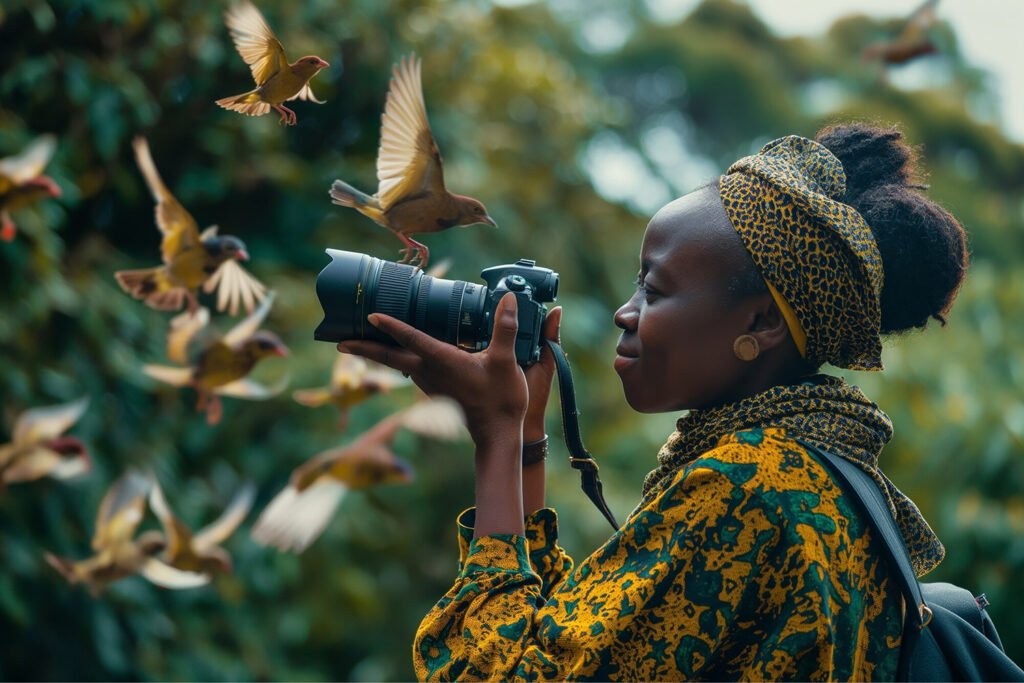Can capturing the beauty of birds through a lens truly come at the expense of their wellbeing?
The ethics of bird photography encompass a delicate balance between portraying wildlife magnificently and respecting their natural habitats. With the growing popularity of bird photography, it is crucial to delve into the ethical considerations that protect these creatures from undue stress or harm. This article explores the meaning of ethical bird photography, addressing common concerns like baiting and intrusive approaches. Understanding these practices is essential for preserving wildlife and ensuring that our artistic pursuits do not overshadow the well-being of the subjects we admire.
Guidelines for Ethical Bird Photography
Maintaining a respectful distance from birds is a fundamental aspect of ethical wildlife photography. When a bird is more focused on a photographer than its own activities, it’s a clear sign that the photographer is too close. Employing tools such as long lenses and portable blinds can help maintain this distance, enabling photographers to capture detailed images without causing disturbance. These tools allow for an intimate view of the subject while respecting their space, thereby minimizing stress and promoting natural behavior.
- Avoid approaching nesting sites to prevent distress or abandonment.
- Do not use audio playback to lure birds, as this can disrupt their natural behavior.
- Stay on designated trails to protect surrounding habitats.
- Use long lenses to maintain a safe distance and avoid startling wildlife.
- Employ portable blinds to observe birds without altering their environment.
- Respect private property and follow any posted signs.
- Avoid feeding wildlife to prevent dependency on human-provided food.
- Be aware of seasonal sensitivities, such as breeding or migration periods.
Patience plays a crucial role in responsible bird photography. Allowing birds to approach naturally, rather than seeking them out aggressively, leads to more authentic and rewarding photo opportunities. This approach not only respects the well-being of the birds but also enhances the photographer’s experience by providing a genuine glimpse into the birds’ natural behaviors. By embodying patience and respect, photographers contribute positively to wildlife conservation efforts.
Legal and Social Considerations in Bird Photography
Adhering to legal guidelines is fundamental in bird photography to prevent conflicts and protect both wildlife and private property. Do photographers need permission to enter private property? Yes, obtaining permission is necessary to avoid trespassing and to maintain respectful relationships with landowners. Additionally, photographers should always respect posted signs and adhere to established rules, which help preserve natural habitats and ensure the safety of both wildlife and visitors. Following minimum distance rules for different species is another critical aspect. These guidelines are in place to minimize disturbance and prevent stress or harm to the birds, ensuring that photography activities do not interfere with their natural behaviors.
Recognizing bird stress signals is vital in respecting bird territories and maintaining ethical boundaries. What are some signs that a bird is stressed? Changes in body language, such as puffing up feathers, increased vocalizations, or sudden movements, indicate stress. By understanding and identifying these signals, photographers can adjust their behavior to avoid causing distress. Respecting bird territories involves maintaining a safe distance and not encroaching on nesting sites or habitats. This respect not only protects the birds but also enriches the photographic experience by allowing for authentic and undisturbed observations of wildlife in its natural state.
Final Words
Protecting bird welfare is at the heart of ethical bird photography. By avoiding harmful practices such as baiting or intruding on nests, photographers can show respect for wildlife.
Keeping a proper distance, using tools like long lenses, and recognizing stress signals are vital strategies. These measures not only safeguard birds but also result in less intrusive photographic opportunities.
Adhering to legal guidelines and promoting conservation can foster a deeper appreciation for birds. Ethical bird photography is a powerful way to inspire and engage others in respecting wildlife and their habitats.
FAQ
What are the ethics of birdwatching?
A: Ethical birdwatching involves respecting birds and their habitats. Observers should avoid causing stress or disturbance, follow legal guidelines, and maintain a safe distance to prevent harm and ensure bird welfare.
What are the ethical considerations in wildlife photography and observation?
A: Ethical wildlife photography demands respecting animals by keeping a safe distance, avoiding baiting or playback, and not disturbing nests. These practices help protect wildlife welfare and natural behaviors.
What is the ethics of photography according to Susan Sontag?
A: According to Susan Sontag, photography ethics revolve around respecting subjects, considering the impact of capturing images, and understanding the power dynamics between photographer and subject.
What are the ethical considerations of photography?
A: Ethical photography considerations include gaining consent, respecting legal guidelines, ensuring privacy, preventing harm or stress to subjects, and accurately representing contexts without manipulation.


